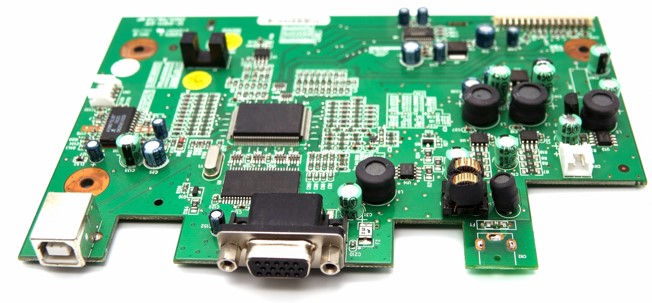EMC Question of the Week: October 21, 2024

Peaks in the radiated emissions from an electronic device are well above the CISPR 32 limit at 350, 370, and 390 MHz. They are found to be due to a 10-MHz signal from a clock driver that is distributed to two CMOS components on a 15-cm by 10-cm circuit board. Based on this information alone, there are at least two obvious deficiencies in this design, one of which is that the clock signal
- transition time is too fast
- is not matched
- is routed on an outer layer
- passes between resonant planes
Answer
The best answer is “a.” The observed peaks are occurring at the 35th, 37th and 39th harmonics of the clock. A 10-MHz clock signal with a transition time of about 10 nsec, does not have enough voltage to exceed the CISPR 32 radiated emissions specification (even if was directly driving a resonant antenna). Anytime significant emissions are observed at frequencies above the 11th harmonics of a signal's fundamental frequency, it is likely that the transition times have not been adequately controlled.
The other obvious deficiency in this design is that the clock signal was allowed to couple to an external cable (or something very large). This board is too small to have traces or components that can radiate efficiently below 400 MHz. Even if the transition times were left uncontrolled, this clock signal could not cause a radiated emissions problem unless the clock trace were routed close to something (e.g., another trace) that could carry a significant amount of the power to the unintentional antenna.
In this case, matching the clock trace is not necessary or desirable. If the transition time is controlled, the trace lengths are too short to require matching.
And there is nothing inherently wrong with routing a high-speed trace on an outer layer. Microstrip traces are very poor radiation sources. They have to couple to something else in order to create a radiated emissions problem.
Passing between planes is also not a problem. The planes on this board are too small to form a resonant cavity below 400 MHz.
Have a comment or question regarding this solution? We'd like to hear from you. Email us at
